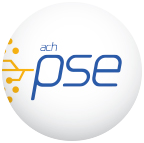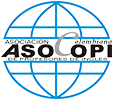Grupo de Investigación en Lingüística Aplicada (EILA)
CALL/CMC and Multimodal Pedagogies
Coordinator : José Aldemar Álvarez Valencia, PhD
Affiliation : Universidad del Valle
Contact :
asocopisigs@gmail.com
Research group: Grupo de Investigación en Lingüística Aplicada (EILA)
The research group EILA (Equipo de Investigación en Lingüística Aplicada) consists of Faculty and students (both undergraduate and graduate) of the Department of Foreign Languages and Cultures of Universidad del Valle. EILA was created in 1997 and holds the category B in the Colombian ranking system of research groups. Members of the group focus on several areas of knowledge in the field of applied linguistics. The different lines of research of the group include assessment and evaluation, teacher education, methodology of foreign languages (mostly, yet not exclusively, English), and information and communication technologies in teaching and learning of foreign languages.
Grouplac: http://scienti.colciencias.gov.co:8080/gruplac/jsp/visualiza/visualizagr.jsp?nro=00000000002347
Purpose of the SIG and domains of Inquiry
The Special Interest Group CALL/CMC and multimodal pedagogies has two purposes. First it intends to address issues emerging from the connection between digital technologies and English language teaching and learning. Second it aims at opening a new line of inquiry in Colombia concerning the integration of the multimodal social semiotic perspective in foreign/second language education. Computer Assisted Language Learning (CALL) or Computer Mediated Communication (CMC) comprise multifarious areas of exploration that include: the use of computers of any other digital device to teach and learn languages, online communication (e.g. interaction structure), intercultural exchanges, telecollaboration, identity construction, teacher training, development of skills, gaming, mobile learning, online literacy, assessment, virtual worlds and multimodality. The second area of interest of this SIG is multimodal pedagogies. Our work draws on multimodal social semiotics and proposes that language learning and teaching should depart from a view of communication and learning as meaning making. In this view, communication is multimodal and thus teaching a foreign/second language should pay attention to all modes of communication that part-take in interaction: verbal and written language, gesture, space, gaze, and visual modes. The concept of ‘mode’ is central in this proposal because different modes of communication afford different potentials that can enhance language learning, particularly, in the new communication landscape where in audiovisual forms of meaning making are dominant.
We aim at:
• Developing conceptual and practical applications of the multimodal social semiotic theory in foreign/second language education
• exploring how the new communicational landscape and textual habitats that students inhabit impact language teaching and learning
• providing insights into how the semiotic design of pedagogical materials and sites of learning impact teaching and learning
• exploring the relevance of gesture, gaze and spatial modes of communication in the development of intercultural skills
• integrating digital multimodal texts in English language teaching and learning




